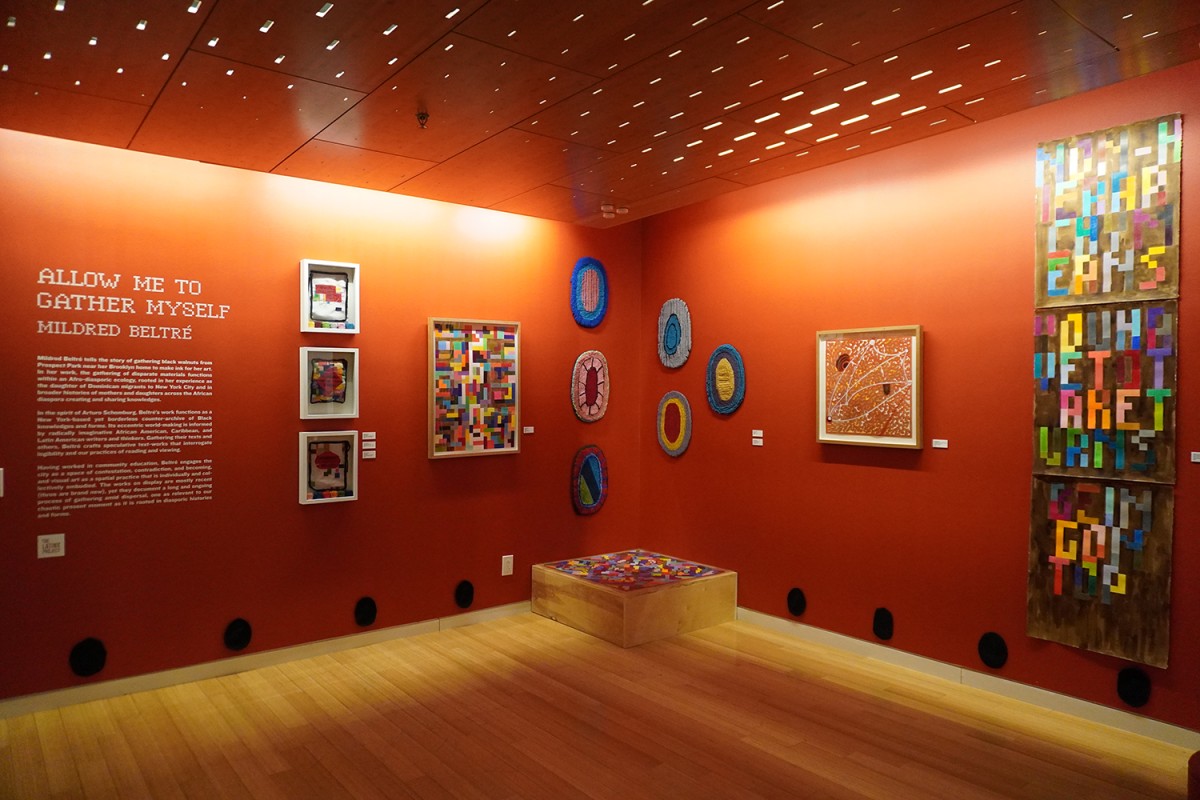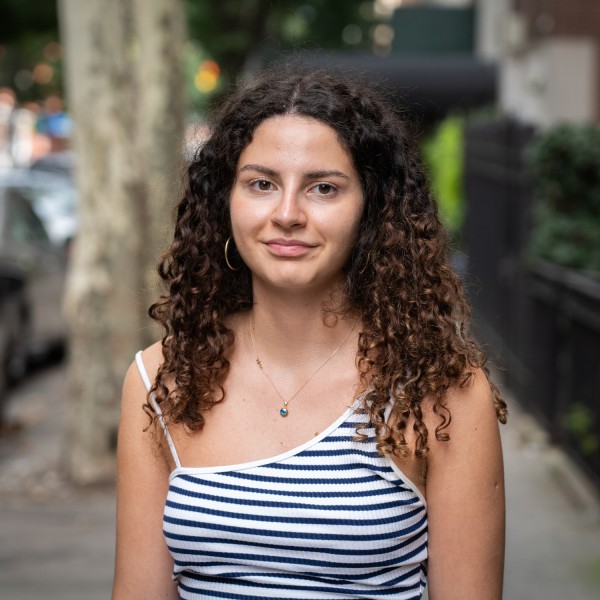After moving from Puerto Rico, I found that New York City was a drastic change from the place I’ve always called home, but I still see traces of my culture and other Latinx communities all over. This visibility serves as both a comforting reminder that I am not alone, and also a reminder of the histories that led my people here. Mildred Beltré’s current exhibition, “Allow Me to Gather Myself,” exemplifies this raw complexity of the Hispanic diasporic culture across the city.
Until Dec. 7, the show of abstract and colorful drawings will be on display in the Department of Social and Cultural Analysis in NYU’s 20 Cooper Square. Beltré is the current artist-in-residence of NYU’s The Latinx Project, which focuses on promoting Latinx art in the United States.
The show displays many different art mediums, but the main focus is Beltré’s drawings, which use ink extracted from black walnuts gathered by the artist herself across New York City. Entire sheets of paper are covered in this ink and she overlays it with colorful grids, drawn in with colored pencils.
At first sight, her drawings may look like simple squares of different colors. After closer inspection, however, viewers will eventually notice handwritten messages hidden behind the squares. Some are harder to read than others, and they all narrate the complexities and histories of the Black and Latinx diasporas in New York City.
“You and Your People” is a colored-pencil-and-walnut-ink drawing of a multi-size rectangular grid. When I first saw this piece, I just thought it was a simple drawing, but I could feel that there was more. The work sits diagonally on the floor of the exhibition space, and this placement helped me evaluate it from different scales and angles. It took me over 30 minutes to realize there was a written message obscured by the squares, and even more time to figure out what it said. Finally, the words “tell me do you and your people feel?” revealed themselves to me.
I was instantly taken with a feeling of relatability and comfort thinking about my culture and family and how they express their feelings and love. Puerto Ricans express their love through food and are always there to help the people around them, even if they are complete strangers. Every other Spanish speaker in the diaspora becomes a brother or sister to them, no matter their native country. My people also know what it means to lose everything, as they witnessed their houses drown in the turmoil of Hurricane María. I questioned whether she was referring to my people, or those that displaced us? I stood glued to my spot while thinking about these questions.
I was first relieved when I saw art in the gallery with more easily legible messages, as Beltré’s words aren’t always hidden behind grids. But, as I read her cutting words, I wasn’t sure if it was better to have the privilege of seeing the daunting phrases, or if I’d have been better off not seeing them at all.
Three artworks, “The World,” “We probably never” and “Remember,” are lined up vertically at the edge of the exhibition space. They are cotton cloths, woven with colorful text. Beltré plays with the different plural pronouns throughout the work, bringing in the complex question of who her work represents.
In the work, “The World,” the words “The world does not belong to us,” are woven onto the piece, which made me question who she is referring to. I wondered who this “us” was referring to. The piece “We probably never” states, “We probably never had a chance at history.” Similarly, I wondered who falls into this “we.”
The thought of not being remembered is terrifying to me, but I know there are many who have met this fate. From enslaved Africans who were forced to migrate to the New World to Latinx families crossing the border, I thought about all of those who were lost or forgotten on their way to the United States.
This narrative shifts in “Remember,” which says, “Remember you too will die.” Beltré now shifts her target with the pronoun “you,” making me question again who she is addressing. I thought of all of those who profited from the suffering of the forgotten, rather than the forgotten people themselves.
Beltré’s play on illegibility and legibility brings forth how complex it is to tell the diasporic histories of Black and Latinx communities, and how both visible and invisible the problems facing the communities are to others. As I’ve explored New York City and the different histories scattered throughout it, I’ve noticed all the cultural things that have been gained and lost by Hispanic communities.
As a spectator, you can make an effort to understand the written messages displayed in her art. A point is made about the viewer’s inability to understand, however, as nobody will ever be able to feel quite as Beltré does. They’ll never experience the complexities and illegibility of her world, just as nobody will experience those of mine, and this is what makes the exhibition important. While exploring the show, I reflected on my own experiences rather than placing myself in Beltré’s.
Contact Diana C. Sánchez González at [email protected].
























































































































































